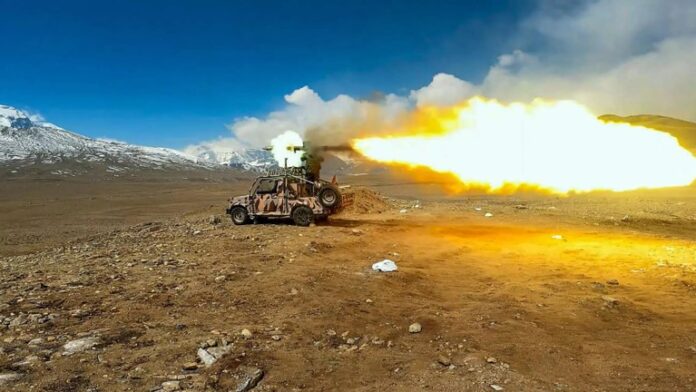The Indian Army conducted anti-tank guided missile firing exercises in the rugged terrain of Sikkim, at super-high altitudes. This strategic maneuver not only demonstrates the military’s ability to operate in challenging environments but also underscores the significance of Sikkim’s terrain in India’s defense strategy.
Sikkim’s unique landscape, characterized by towering peaks and rugged terrain, presents both challenges and opportunities for military operations. Operating in super-high-altitude regions comes with formidable challenges such as low oxygen levels, extreme temperatures, and difficult terrain. Therefore, conducting military exercises in such environments is crucial to test the resilience of troops and equipment and prepare them for potential threats along India’s mountainous borders.
Sikkim holds strategic importance in India’s defense architecture as it serves as a gateway to the northeastern region and shares borders with China, Nepal, and Bhutan. Given its proximity to the Line of Actual Control with China, ensuring Sikkim’s security is vital to safeguarding India’s territorial integrity and national interests.
The recent military exercises in Sikkim are part of India’s broader efforts to enhance border security and deterrence capabilities along its northern frontiers. By showcasing its military prowess and operational readiness, India sends a clear message of deterrence to potential adversaries while reaffirming its commitment to defending its borders and sovereignty.
These exercises also emphasize the importance of interoperability and jointness among different branches of the armed forces. By coordinating their efforts, the army, air force, and navy can maximize their combat effectiveness and respond swiftly to emerging threats in diverse operational environments.
Moreover, the successful conduct of these exercises highlights India’s indigenous defense capabilities and technological advancements in military hardware. With a focus on developing cutting-edge weaponry and surveillance systems, India aims to strengthen its defense preparedness and reduce dependency on external sources for defense procurement.
It’s worth noting that while these military exercises demonstrate India’s resolve to defend its borders, they are conducted within the framework of international law and norms. India remains committed to maintaining peace and stability in the region through dialogue, diplomacy, and cooperative engagement with its neighbors.
Overall, the anti-tank guided missile firing exercises in Sikkim underscore India’s readiness to confront challenges and defend its sovereignty in a complex and dynamic security environment. As threats continue to evolve, India’s commitment to enhancing its defense capabilities and ensuring the security of its borders remains unwavering.




